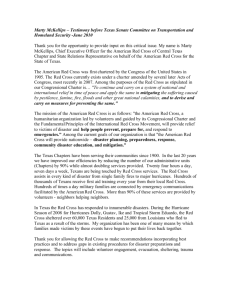INDIVIDUAL PREPAREDNESS
advertisement
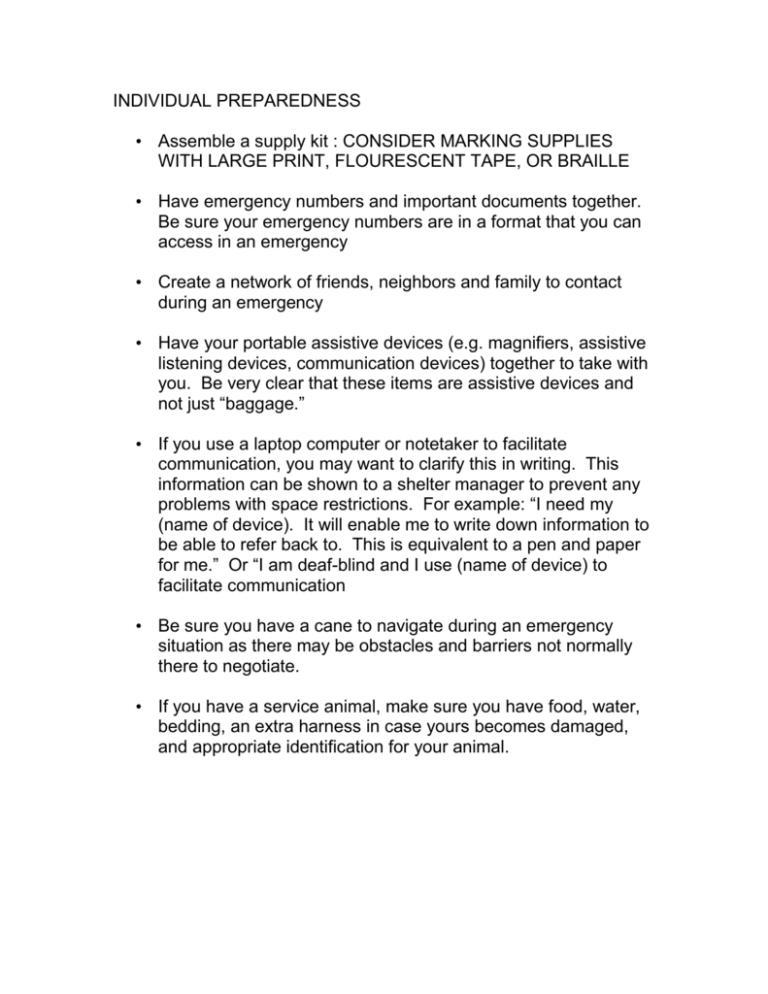
INDIVIDUAL PREPAREDNESS • Assemble a supply kit : CONSIDER MARKING SUPPLIES WITH LARGE PRINT, FLOURESCENT TAPE, OR BRAILLE • Have emergency numbers and important documents together. Be sure your emergency numbers are in a format that you can access in an emergency • Create a network of friends, neighbors and family to contact during an emergency • Have your portable assistive devices (e.g. magnifiers, assistive listening devices, communication devices) together to take with you. Be very clear that these items are assistive devices and not just “baggage.” • If you use a laptop computer or notetaker to facilitate communication, you may want to clarify this in writing. This information can be shown to a shelter manager to prevent any problems with space restrictions. For example: “I need my (name of device). It will enable me to write down information to be able to refer back to. This is equivalent to a pen and paper for me.” Or “I am deaf-blind and I use (name of device) to facilitate communication • Be sure you have a cane to navigate during an emergency situation as there may be obstacles and barriers not normally there to negotiate. • If you have a service animal, make sure you have food, water, bedding, an extra harness in case yours becomes damaged, and appropriate identification for your animal. EVACUATION • BECOME FAMILIAR WITH ALTERNATE TRANSPORTATION AND PEDESTRIAN ROUTES IN YOUR NEIGHBORHOOD AND WORK AREA • KNOW THE LOCATIONS OF EMERGENY EXITS in the buildings where you are such as work and home • CREATE AND IMPLEMENT A BUDDY SYSTEM – Identify a reliable designated driver for home, school and work in case you need a ride in the event of an emergency • PRACTICE EMERGENCY EVACUATION PLANS • Have a means of writing and taking down information to assist you with communication in the event of an emergency. Have paper, pens and markers, or slate and stylus in your possession in addition to assistive technology and back-up power supplies for your technology. Example: if you are an individual who is deaf/blind, have index cards with preprinted phrases that you will need to use when communicating with first responders. SHELTER • Contact your local Emergency Management Office to determine the location of local shelters near you • Identify optional modes of transportation to reach the shelter – have the number of your local fire and police departments in case public transportation or your back-ups cannot reach you • Have your personal emergency bag packed and ready • Request that you be physically oriented to shelter upon your arrival • Consider requesting a location at the shelter that is close to the rest rooms WHERE DO WE GO FROM HERE… • Help prepare yourself by contacting your local Red Cross for information and classes. In an emergency, you may need to provide first aid or other assistance • Encourage your community to disseminate information through creative alternatives, such as radio reading services. • Demand pre-event emergency planning information in accessible formats at the same time printed materials become available. • Know specific vulnerabilities for your community such as tornadoes, hurricanes, etc. • Talk to your local emergency management office about your individual needs and learn about their planning efforts to meet unique needs.
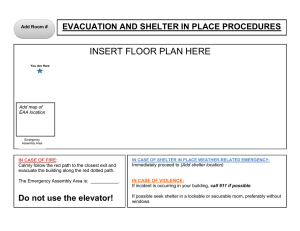


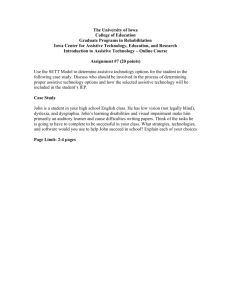



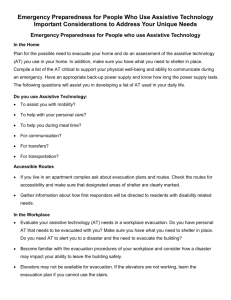
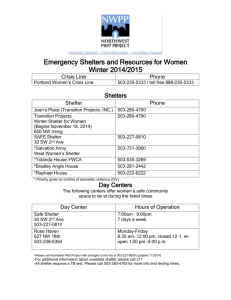
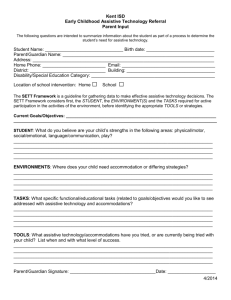
![Action Plan Training for College of Education [Erickson Hall]](http://s3.studylib.net/store/data/006838784_1-e08201da1f024d72d03dde66b95777a5-300x300.png)
